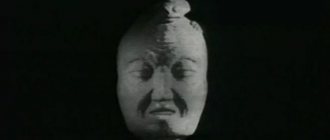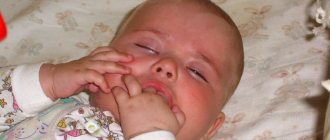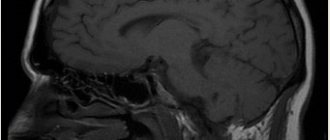- Treatment of selective mutism in children
Selective mutism is a kind of disease in which the patient refuses to speak. The pathology occurs in both adults and children. The person does not have any physical defects or organic lesions. In childhood, the disease manifests itself more noticeably. Correction and treatment of selective mutism will be required. Symptoms may appear in different ways. Various drugs can be used for therapy.
Symptoms of selective mutism
The most important symptom is a selective method of communication. There may be no speech in certain situations. Selective mutism in children manifests itself in schools and kindergartens. The child cannot speak in the room or office. The baby does not communicate in front of strangers or teachers. In rare cases, children may not speak at home, but in kindergarten or school they talk willingly.
Patients may not use verbal contact, but use facial expressions and pantomimes. If the disorder is in an advanced form, the child may freeze, hide his head and tuck his legs. There may be a pathological attachment to the mother. The following symptoms of selective mutism may be added: delayed speech development, phobias, depression, enuresis.
Article:
Selective mutism, also known as psychogenic mutism, causes people to remain silent, particularly in social and stressful situations.
The causes of this condition are unknown, and although it can affect anyone, selective mutism is most common in young children. What is Selective Mutism?
Mutism can be caused by a number of conditions, including deafness, speech delay and developmental disabilities.
But selective mutism occurs when someone—usually a child—who is able to speak stops doing so. Most adults have witnessed an intermittent example, selective mutism, where a child who can speak does not react to an unfamiliar adult. Typically, selective mutism is much more pervasive and interferes with daily activities. Some children with selective mutism do not speak in social situations, at school, or during times of extreme stress.
There is a strong correlation between selective mutism and shyness; parents whose children selectively "switch off" sometimes interpret the child's behavior as rudeness and believe that he or she is simply refusing to talk. In fact, the child is truly unable to speak in these cases. Most children with selective mutism also experience some kind of phobia, such as social anxiety.
Symptoms of Selective Mutism
Children and adults with selective mutism may talk in their own homes or other familiar places, they may be shy in everyday situations and show fear and anxiety when around people. To be diagnosed, the behavior must have continued for one month and it must not be due to cultural issues. Selective mutism may also be accompanied by a characteristically blank facial expression.
What Causes Selective Mutism?
Selective mutism has no known cause, although those who have experienced it often have a history of anxiety, anxiety, extreme shyness, social phobia, and/or inhibited temperament, which is believed to be due to decreased levels of excitability in amygdala. This condition is almost always accompanied by a certain degree of shyness or inhibition.
Selective mutism is different from traumatic mutism and mutism. People who experience selective mutism are able to speak but are unable to do so due to shyness, anxiety or pressure. However, if left untreated, selective mutism can progress to mutism, resulting in a complete inability to speak in any environment.
How is Selective Mutism Treated?
Selective mutism can affect a child's ability to learn in school, as well as their social status. Treatment of selective mutism, first of all, takes place in therapy, reducing the person’s anxiety level, sometimes together with a psychiatrist (medication). Trying to force someone with selective mutism to speak may actually make the condition worse.
The key to treating selective mutism lies in behavioral changes. Parents of children with selective mutism can help their children by making lifestyle changes, gradually introducing them to new people, choosing small schools, helping children work on social skills, praising the child for their efforts rather than trying to force them to talk or simply not accepting them. state. Anti-anxiety medications may be helpful for people with this condition, especially those whose anxiety is very severe.
When selective mutism accompanies another condition, such as generalized anxiety or social phobia, treatment begins by focusing on the underlying anxiety.
Selective Mutism in popular culture.
In popular culture, traumatic mutism is often confused with selective mutism, since the two conditions can produce similar results. Traumatic mutism, which can result from a traumatic event, is often depicted in books and films such as Maya Angelou - I Know Why the Caged Bird Sings and Laurie Halse Anderson - Speak. The main characters in these books became mute after experiencing rape.
The portrayal of selective mutism in popular culture can be seen in such famous sitcoms as The Big Bang Theory. One of the characters, Rajesh Koothrappali, plays an adult scientist who has selective mutism with anxiety (it occurs selectively to him, namely when talking to women). Silent Bob, a character who appears in many of Kevin Smith's films, also appears to experience selective mutism.
The most striking illustration of childhood selective mutism is presented in the Paul McCartney song “She Refused to Talk.” It is about a girl who is constantly silent at school, experiencing anxiety and loneliness, but when she comes home, her voice returns and her words move freely.
Dear parents, if your child shows what is described in this article, then try to contact a specialist, and do not forcefully try to adapt the child to the social environment.
After all, your child is the miracle that makes your life happy, and you are the miracle that, in children’s eyes, will always come and protect you from any misfortune.
Diagnosis of selective mutism
To identify selective mutism, you will need to visit a neurologist, speech therapist, or psychologist. Doctors will not only help make a diagnosis, but also cure the pathology.
The following procedures may be prescribed to identify the disease:
- General collection of information. First of all, the doctor must know how the mother’s pregnancy went and what illnesses she suffered while carrying the child. After this, he will determine the baby’s reaction to the vaccine and monitor his development. The psychologist should look at the doctor's diagnosis and talk with the child so that he can talk about phobias. After this, comprehensive treatment for selective mutism is prescribed.
- Visit to a neurologist. The doctor conducts various studies, which include the quality of speech, breathing rhythm. The child’s blood pressure can be measured and neurological diseases analyzed.
- Craniogram. The procedure helps assess the condition of the brain.
- Magnetic resonance imaging and computed tomography. The procedures perform the same function as a craniogram, but with more accurate results.
- Electrocardiogram.
- Chest X-ray.
- Electroencephalography. Without this procedure, which helps to find out the level of electrophysiological processes, the disease cannot be detected.
- Blood and urine analysis. The doctor should check your hormone levels.
After selective mutism is diagnosed, the specialist prescribes treatment.
Selective mutism in adults
Most often, selective mutism in adults occurs in women. Representatives of the fairer sex are more emotional and sensitive. Thus, they are predisposed to be overly impulsive. Experts diagnose men too.
Pathology develops in the following cases:
- High sensitivity. If the problem is accompanied by hypertrophied suspiciousness, then after an emotional reaction the patient will acquire pathology.
- Stroke. If a person has suffered a disruption in blood supply, the area in the brain responsible for speech is affected.
- Problems with the vocal cords. They may be due to damage or complete paralysis of these muscle folds.
If a person's mutism is caused by hysteria, then the disease is temporary.
Treatment of selective mutism
It is mandatory to use drug treatment. It is not recommended to self-medicate, as this may worsen the situation.
After a thorough examination, the following drugs are prescribed:
- Antidepressants. They help solve the problem. Most often, experts prescribe Prozac and Fluoxetine.
- Neuroleptics. The substances help cure mental disorders. In this case, Frenolone, Gidazepam, Risperidone are prescribed.
- Benzodiazepines. Drugs in this group have sedative, hypnotic and anxiolytic effects. Doctors prescribe Gidazepam, Fluorphenazine, Alprazolam.
- Nootropic drugs. The main component is vitamin B15, it helps prolong life and combats stressful situations well. These drugs include Pirecetam, Salbutamine and Oxiracetam.
The disease can be treated not only at home, but also in a hospital setting. It is important to begin treatment for selective mutism in a timely manner. If time is lost, then neuroses, mental disorders, and social phobias will develop in the future.
Correction of selective mutism
In fact, there are many ways to help a patient cope with pathology.
Correction of selective mutism is carried out as follows:
- Breathing exercises. In such a situation, a good specialist is looked for. It will help you learn deep, shallow, rare, frequent and mixed breathing. If you master these basics, you can start doing yoga. It helps coordinate the spiritual and physiological functions of the body.
- Massage treatments. Massage is necessary not only to warm up muscles. Thanks to the procedure, a person will be able to become calmer and recover faster from psychological trauma. Hydromassage is also available.
- Acupuncture. The procedure will help a patient with mutism cope with problems of the nervous system. Acupuncture is prescribed only by your doctor.
- Art therapy. Most people think that the procedure is only for children. Correcting mutism in adults involves working with colors and using it to find unexpected solutions.
- Phototherapy. People love looking through family photos. If the patient is silent, then you can make him talk with the help of photographs. When he sees the exciting moment in the photo, he may start talking.
The goal of treatment is to eliminate the causes of the disease. Eliminate neurotic disorders, as well as improve interpersonal contact.
Correction of selective mutism in children
Selective mutism is mostly a childhood pathology. If even slight deviations in the baby’s behavior appear, you should contact a specialist. Correction of selective mutism in children must be carried out without fail.
You can help your child in the following ways:
- Create a positive environment. In a home where there is peace, kindness and mutual understanding, in rare cases a child suffers from selective mutism. The baby must know that he is loved and listened to, no matter what he says.
- Adequate punishment. Don't listen to your child's whims. Most often, children cannot withstand cruelty from their parents, since they have a fragile psyche. You shouldn’t physically punish your child; it’s best to explain that you can’t do that.
- To fulfill promises. All children believe that adults always keep their words.
- Change the baby's environment. If mutism occurred due to psychological trauma, it is recommended to find a new kindergarten or school.
- Visit specialists on an ongoing basis. It is not recommended to treat neurologists or psychologists as those people who cannot help a child.
If the baby stops talking or behaves strangely, then certain measures should be taken. Many people believe that visiting a psychiatrist will affect the child's life. If there is any problem with the child, you should contact a specialist. Failure to act may cause harm to the child and the disease will become permanent.
Categories of mutism and its features in children
Childhood mutism, developing between the ages of 3-9 years, is characterized in typical cases by:
- persistent, lasting at least one month, muteness – refusal of speech contact;
- complete preservation of consciousness with the simultaneous absence of disorders of the vocal apparatus;
- inability to speak in exciting situations or its selectivity (in accordance with a specific situation or when communicating with people of a certain circle);
- maintaining the ability to formulate and express thoughts without resorting to oral speech (using non-verbal methods of communication: writing, gestures).
The division of a phenomenon into categories is justified by both its possible cause and typical manifestations.
Thus, its psychogenic variety, based on the mental trauma of psychogenic psychosis, has the following gradations of mutism:
- hysterical;
- logophobic;
- mixed.
In the hysterical version, speech disappears due to the onset of a sharp mental shock; this disorder can take place from 3-5 seconds to a couple of days and weeks - typical for women and children with a particularly sensitive psyche.
A variant of logophobic mutism is dictated by the fear of hearing one’s own speech; observed mostly in low-performing schoolchildren, it does not always have a favorable prognosis and is highly dependent on the characteristics of the carrier personality.
The development of a pathological condition in timid and fearful children, with a painful attachment to their parents and home, causing muteness when entering an unfamiliar situation and environment (children's group), is called pathocharacterological mutism, classified in the elective category.
The phenomenon that develops under the influence of hallucinatory voices and intimidating delusional ideas belongs to the class of endogenous-psychotic mutism.
According to another classification, mutism can be:
- selective (elective) , manifested in loss of speech in a frightening and tense situation;
- akinetic , which is characterized by motor and speech disorders;
- apalic , causing a state of indifference, similar to the state of a person in a coma with a complete lack of reaction to irritations coming from the outside world;
- and selective mutism - a persistent refusal to communicate and talk with strangers or in their presence.
The classic picture of the development of mutism in children is a situation of separation from the family and placement in a new social environment, perceived as a betrayal by the parents and causing reluctance to speak - a form of silent protest against the current situation and its “culprits”.
Selective mutism in children
The disease can occur for various reasons, they are all different from each other.
The following factors lead to selective mutism in children:
- The child does not know how to talk with other people and find a common language.
- The baby cannot verbally formulate his desire.
- The child does not have his own space to express unpleasant feelings.
- Negative atmosphere in the house.
- Brain damage.
- Early development of schizophrenia or autism.
- Hysterical neurosis.
- Excitement due to severe fright or loss of a loved one.
- Lack of attention from adults, as well as misunderstanding in the family.
- High anxiety, as well as nervous tics.
- Stubbornness.
- Speech problems.
Such reasons can lead to other problems. Selective mutism will need to be identified in order to prescribe comprehensive and effective treatment. The pathology is an anxiety disorder. The child can feel good and communicate with friends and relatives. If the baby changes the situation, he stops talking. The child cannot say a word because he is afraid.
Selective mutism can persist into adulthood. In this case, various social phobias appear. The problem occurs in those children who have a labile nervous system, as well as isolation, resistance or anxiety for no reason. If a child has anxiety, then he needs parental support in difficult situations.
Most often, pathology occurs in those families where the psychological climate is uncomfortable. Many doctors say that a type of mutism is a neurotic disorder. Children can suffer not only from muteness, but also from depression, timidity, and vulnerability. The pathology is most severe in adolescents. The disease can be inherited.
Treatment of selective mutism in children
Therapy should be aimed at eliminating social phobias, as well as anxiety and depression.
The following methods of treating selective mutism in children are used:
- Cognitive-behavioural. The procedure is carried out individually for each child. A psychotherapist helps to establish contact and helps to express and overcome bad moments.
- Behavioral. Group trainings will help develop communication and verbal interaction skills. Correct actions should be supported by attention and praise. The child comes into contact with other people of any age, so he overcomes shyness and embarrassment.
- Family counseling. The doctor tells adults how to properly communicate with the child. You will need to approve and praise the baby.
Psychotherapy can be supplemented with speech therapy sessions. Encouraging your child to pronounce words correctly will help reduce the child's insecurities.
Selective mutism can be eliminated within the first six months. The patient's condition will gradually improve if there is psychotherapeutic intervention. Disease prevention means giving the child the opportunity to choose, express himself emotionally, and have the right to express his opinion.
Additional symptoms of mutism
It is immediately necessary to note the fact that, as a rule, a person with mutism retains a clear mind, is truly aware of everything and understands speech addressed to him. Refusing to give a voice, such a person can very actively use methods of non-verbal communication: nodding, gestures, winking, facial expressions, and so on.
Unable to find the strength to answer questions or start a conversation, patients with mutism often carry a notepad and pen with them. Communication in this case occurs through words written on paper. Moreover, if there is at least a minimal opportunity to avoid the need for verbal interaction, a person with mutism will try to take advantage of it.
Pathological muteness is also characterized by the following conditions:
- increased anxiety, constant restlessness, nervousness; a person from the outside may seem somehow twitchy and fussy;
- negativism, which is especially characteristic in combination with mutism in childhood;
- inhibited reaction, which can manifest itself both in actions and gestures, and in paying attention to sound sources; patients with mutism may have slow thinking, appear thoughtful, unhurried, immersed in their own world;
- inadequate shyness, excessive shyness usually accompany specific muteness;
- aggressive behavior and impulsive – affective – reactions to any external stimuli; As a rule, anger, rage, and aggression in a person with mutism are especially pronounced when other people try to force the patient to start talking; however, in a number of cases, a “numb” person may react inadequately to an invasion of his personal space, to any changes in his usual life or environment, this is especially typical for mutism, which develops due to autism;
- problems with socialization, which are caused precisely by the psychological impossibility of maintaining a conversation.






